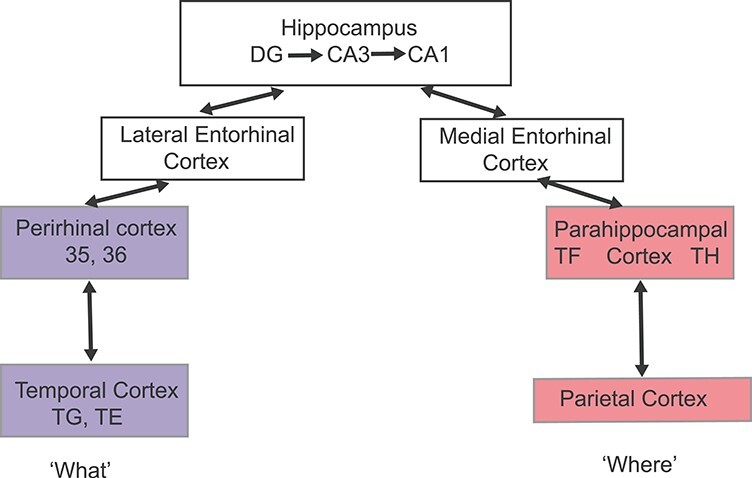Figure 1 .

A simplified, schematic, conceptual diagram of the dual stream model of hippocampal connectivity. Neuroanatomical tract-tracing in animals suggests that spatial, “where,” representations from the dorsal stream parietal cortex project via the parahippocampal gyrus and then medial entorhinal cortex to the hippocampus, and that “what” object representations from the ventral stream temporal cortex project via the perirhinal cortex and lateral entorhinal cortex to the hippocampus (Van Hoesen and Pandya 1975; Van Hoesen 1982; Amaral et al. 1983; Burwell et al. 1995; Saleem and Tanaka 1996; Burwell 2000; Aggleton 2012; Knierim et al. 2014; Nilssen et al. 2019). It is suggested that the CA3 neurons of the hippocampus with their highly developed associative recurrent collateral connections can then associate the inputs to form object-location episodic memories of what happened where on a particular occasion (Kesner and Rolls 2015; Rolls 2018). In macaques, the connections are known to be more extensive than shown here, as described in the Introduction.
